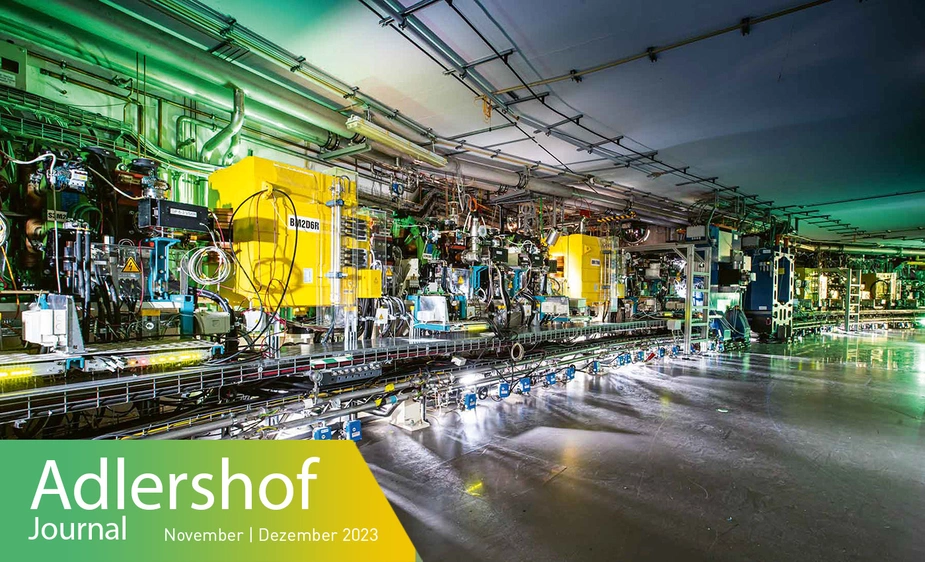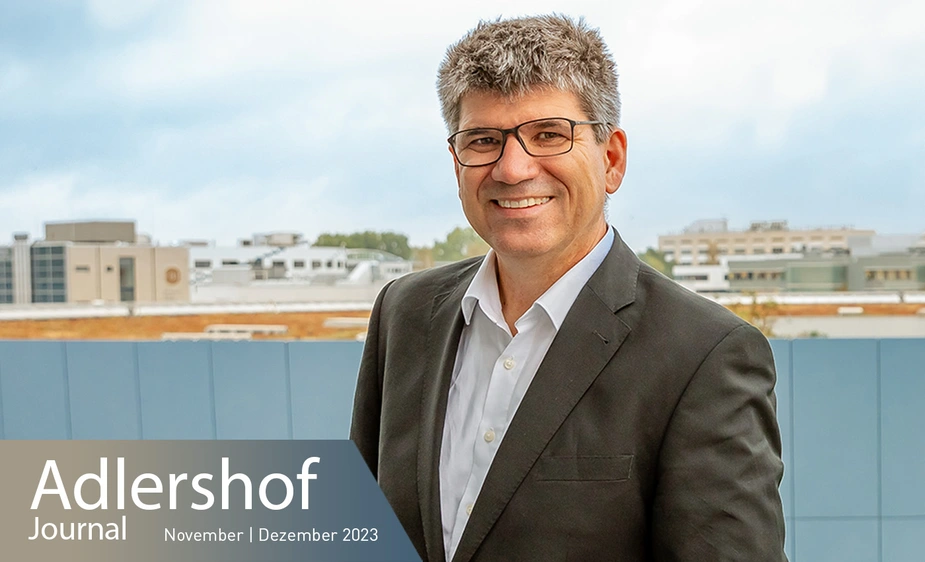Happy Birthday BESSY II
A conversation about 25 years of the high-brilliance radiation source in Adlershof
BESSY II is a synchrotron, a storage ring, a high-brilliance radiation source. Or as Bernd Rech puts it: a high-tech X-ray microscope. For 25 years, it has been helping researchers from all over the world to uncover the secrets of materials, while it watches live as chemical processes do their work. We took this birthday as an opportunity to talk to the scientific director of Helmholtz-Zentrum Berlin für Materialien und Energie (HZB) about a quarter of a century of exciting research at the heart of Adlershof.
Adlershof Journal: How did BESSY II end up in Adlershof?
Bernd Rech: A replacement was needed for BESSY I in Berlin Wilmersdorf. Which had been planned for a long time. Berlin simply needed a better synchrotron. One from the newest generation at the time. Luckily, unification happened in the middle of the planning phase. That’s when they decided to make BESSY II a flagship project for the new science and technology campus in Adlershof. After five years of construction, the synchrotron went into operation in September 1998.
To you, what are the most exciting research results that BESSY II contributed to in the past 25 years?
BESSY II’s contribution to deciphering parts of the novel coronavirus was, without question, very important. A research team from Lübeck elucidated the structure of one of its important main proteins. The measurements were done in February 2020, so right at the beginning of the pandemic. BESSY II has frequently contributed spectacular new findings to issues of catalysis in recent years. In many scientific and technical fields, insights into how a catalyst controls a chemical reaction are extremely important. Metrology also played a large role during this time. Physikalisch-Technische Bundesanstalt (PTB), Germany’s national metrology institute, has measured X-ray mirrors and calibrated methods that were pivotal to manufacturing the newest generation of chips.
Medicine, energy technology and novel materials seem to be evergreen topics at BESSY II. Were there more exotic topics?
Of course. Archaeology stands out here. The Nebra sky disc was studied at BESSY II, as was an ancient Viking ship, and a virus in the fossil tooth of a dinosaur. When others mention the latter, I sometimes jest that we now also dabble in dental research.
In addition to the Natural History Museum and its dinosaur tooth, Charité Berlin has also used BESSY II for research on dentition. The focus here was on 3D images of root canal treatments.
Where is BESSY II heading?
We need to keep up with technological developments to continue to do great research in the years to come. Because of this, it is planned to upgrade BESSY II. This affects the laboratories where our research teams work as well as components of the workstations. With BESSY II+, it will be possible to examine samples in real-time and under realistic field conditions. For example, the aim is to watch batteries discharge and charge. Using these findings, a new approach to synthesis is being planned in the laboratory next door. This might give the industry some crucial hints. In parallel, planning for BESSY III is also underway. This will create a completely new accelerator, which will be able to work on the bleeding edge of technology. Sustainability will play a decisive role in this. We want to realise the building envelope entirely with photovoltaics. We want to make efficient use of waste heat. And, by using novel technologies, we will save a lot of energy.
Will this happen in Adlershof as well?
We can’t build the new accelerator into the shell of the old one. This means we need a new location. It will be here in the Technology Park, embedded into this environment of research, development, and entrepreneurial activity. And into Berlin’s university landscape. This is the only way of maintaining our unique, long-standing international position. I think this is a great advantage for both sides. BESSY benefits from Adlershof and Adlershof benefits from BESSY.
Kai Dürfeld for Adlershof Journal

